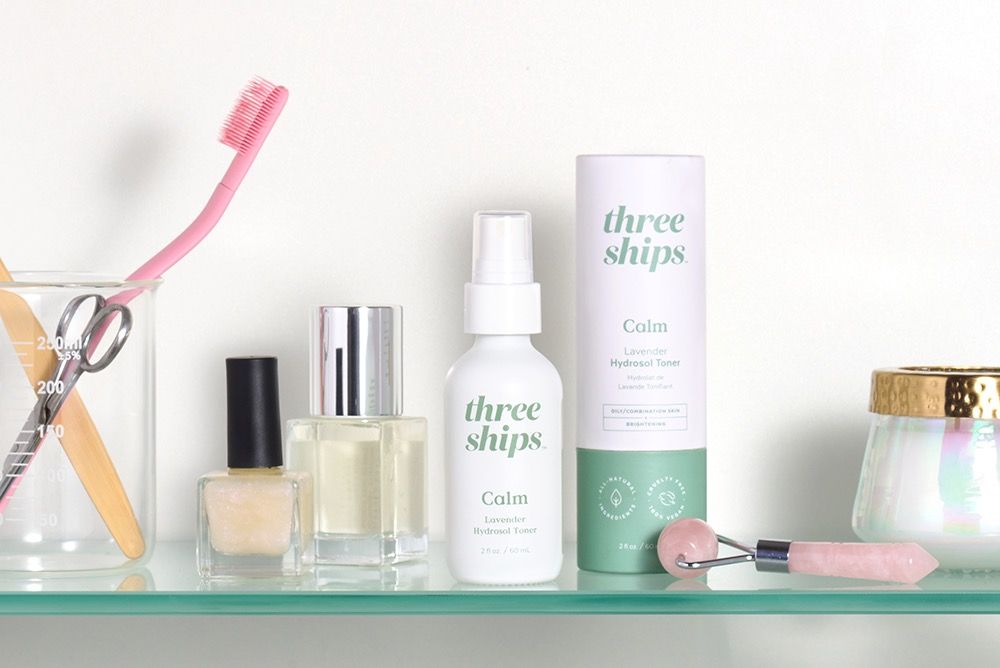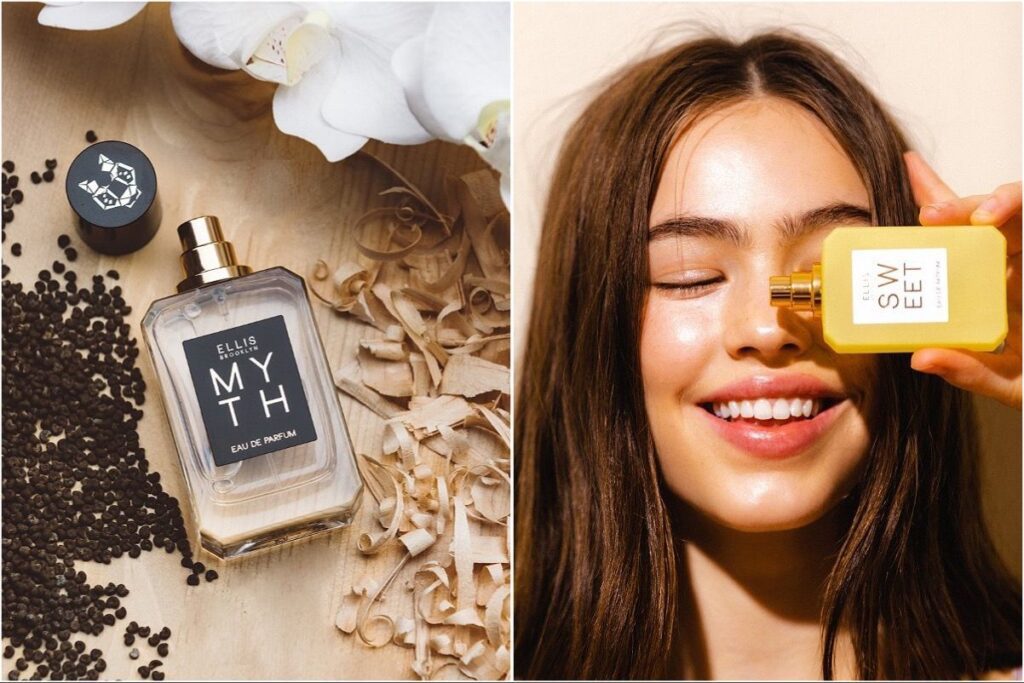Our planet is overflowing with waste from every industry, and it’s our personal care items that could be doing the most harm. The cosmetics industry alone produces 120 billion units of packaging each year. But before the product even leaves the factory, 90 percent of the raw materials used to create it have already become waste. There’s a reason beauty is frequently labeled the new fast fashion.
But there’s hope. By leaning into those tried-and-true sustainability techniques of re-using the old to make new, we could help change the beauty industry’s wasteful ways, and in turn, mitigate its environmental impact considerably. Upcycling may be the future of beauty.
By upcycling waste, we can mitigate beauty’s environmental impact
According to 2019 research, upcycled products have a global market value of $150 million. Emerging and established fashion designers often repurpose plastic, deadstock fabrics, and even food scraps to make clothes and accessories. Previously, Adidas and Stella McCartney partnered to create an athletic product line made with recycled ocean plastic. And Game of Thrones star Maisie Williams teamed up with French fashion house Coperni to turn discarded apple peels into vegan leather handbags.
In beauty, forward-thinking brands like Three Ships Beauty are also reusing discarded food, plant byproducts, and even leftover lumber scraps to reduce waste. The brand’s approach is simple: use ethically sourced ingredients that don’t compromise the environment or the integrity of its goods, but also have valuable skincare benefits, like anti-inflammatory properties.
The company’s co-founder Laura Burget says, “We wanted to look at our ingredients from the lens of sustainability to see how we could reduce our impact on the environment.”
Utilizing innovation from the fuel industry
Upcycled beauty is an example of green chemistry. This is the design of chemical products that will either reduce or completely eliminate hazardous substances. In green chemistry, the chemical process of upcycling ingredients is formally known as biorefinery.
Biorefinery is intended to help create and promote a circular economy by utilizing plant materials in their entirety. Whether it’s using food waste or lumber scraps, the goal is to functionalize the remaining product in order to reduce the amount of waste that enters a landfill. Three Ships Beauty upcycles leftover lumber industry wood scraps, which are valuable in skincare as they target dryness and pH imbalances. Beneficial bioactive chemicals are extracted from the leftover bark. The remaining byproduct is used to create renewable energy.

Whether or not you’ve heard of the term biorefinery, it’s likely you’re already familiar with this innovative technology in action. In the early 2000s, biorefinery was a new and developing technology intended to disrupt the petroleum fuel industry. Dozens of starry-eyed startups set out to do the seemingly impossible: repurpose renewable plants into biofuels. Corn ethanol, for example, was one biofuel produced. At the time it was thought to be more eco-friendly than traditional oil (although this theory is now debunked).
But just as Rome wasn’t built in a day, neither were inexpensive and effective biofuels. In order to recoup lost costs and develop new streams of revenue, biofuel companies such as Pacific Biodiesel and Amyris pivoted toward beauty.
Utilizing the same biorefinery and green chemistry technologies, companies began creating eco-friendly ingredients such as upcycled macadamia nuts and fermentation-derived vegan squalene that could be used in beauty products. Amyris now boasts an impressive beauty portfolio, including the likes of JVN, Rose Inc., and Biossance. (As for biofuel, inexpensive alternatives like sugarcane-based biofuel have finally leveled up, with the global market valued at $141 billion and growing.)
Now biorefinery, whether used for beauty or biofuel, is becoming more widely accepted as a viable method for slowing the depletion of the earth’s natural resources. While it’s still a largely unexplored territory, this innovative form of green chemistry presents unique research opportunities.
“Many ingredient suppliers are starting to invest time and money into developing and sourcing upcycled ingredients,” says Burget. She explains that beneficial properties still exist in discarded food and plant waste, and upcycling gives them a second life. It also reduces the production of harmful greenhouse gasses, like methane, and preserves vast amounts of water.
Repurposing ingredients reduces pollution and saves water
Discarded waste, which includes 133 billion pounds of tossed food, emits 68 megatonnes of methane into the atmosphere each year according to the IEA. Methane is particularly destructive when compared to other greenhouse gasses. According to the US EPA, it’s more than 25 times more potent than carbon dioxide.
By leveraging biorefinery to upcycle, the beauty industry can begin to reduce these emissions and help to mitigate climate change. But when used strategically, leftover byproducts used in upcycled beauty can also replace petrochemical processes that otherwise cause greenhouse gas emissions. Take Three Ships Beauty’s upcycled squalane, for example, which is extracted from 100 percent renewable sugarcane. Just like the upcycled lumber scraps, any leftover sugarcane remains are used as biomass fuel, sustaining its own energy consumption.
UN Water estimates that 2.3 billion people currently live in water-stressed countries, and 72 percent of all water withdrawals are used by agriculture. But upcycling can also help to mitigate this impact.

Bee Shapiro, founder of sustainable perfume company Ellis Brooklyn, says: “When it comes to sustainability, upcycling is a great way to cut down on waste and reduce water usage.” This is because the process of creating upcycled ingredients requires less water than harvesting new crops. But upcycling can also combat water pollution; discarded materials can break down and pollute water systems in many countries where ingredients are sourced, like Vietnam, Brazil, and India, sustaining negative ecological effects.
Not only that, but directly sourcing ingredients has led to over-cultivation, resulting in soil exhaustion and land degradation. Take Atlas Cedarwood, a popular ingredient found in many cosmetics and household products. Over-cultivation of this sought-after crop has led to its near extinction, officially landing it on the IUCN’s list of endangered species. Ellis Brooklyn opts for upcycling a different species of cedarwood in its Super Amber fragrance. This not only reduces the over-cultivation of an endangered species, but it also repurposes byproducts that may have otherwise been discarded.
Young consumers drive the growth of upcycled beauty
Upcycled beauty might still be a small part of the industry, but it’s growing bigger with the help of young conscious consumers.
A 2019 study by First Insight found that Generation Z and millennials are more likely to purchase upcycled products than any other generation. They’re willing to pay more for them too—by as much as 10 percent. The majority of Gen-Z and millennials polled also perceived upcycled goods as higher quality and more valuable than all-new material goods. Three Ships Beauty takes this positive feedback from its young customer base into account. “Our customers love that we use upcycled ingredients because it makes them feel great knowing the positive impact they are having on the environment,” says Burget. “Consumers are demanding more transparency and sustainability from the brands they use,” she says. “I foresee upcycling becoming baseline from a sustainability perspective in the next decade.”

Pioneers like Three Ships Beauty are leading by example, and more cosmetic companies will soon follow suit. Other skincare brands such as Le Prunier, Loli Beauty, and UpCircle have long made upcycled ingredients a focal point of their brands. Even Gen-Z TikTok star Addison Rae has released her own fragrance line using upcycled plant ingredients.
There isn’t one solution for combating the current climate crisis, but upcycling provides ample benefits for both the environment and for consumers. For Three Ships Beauty, it will always be built into its ethos. “We’re not just launching products for the sake of expanding our product line,” says Burget. “We are actively in the development of several new products, all using upcycled ingredients.”
The effects of climate change, pollution, and the depletion of natural resources have compounded, sustaining negative environmental consequences. Consumers are actively seeking more sustainable products and are calling on the industries they buy from to deliver. Upcycling and other forms of green chemistry are essential for the future of sustainable beauty, making the verdict crystal clear: upcycled beauty is not just a trend—it’s an entire movement.


